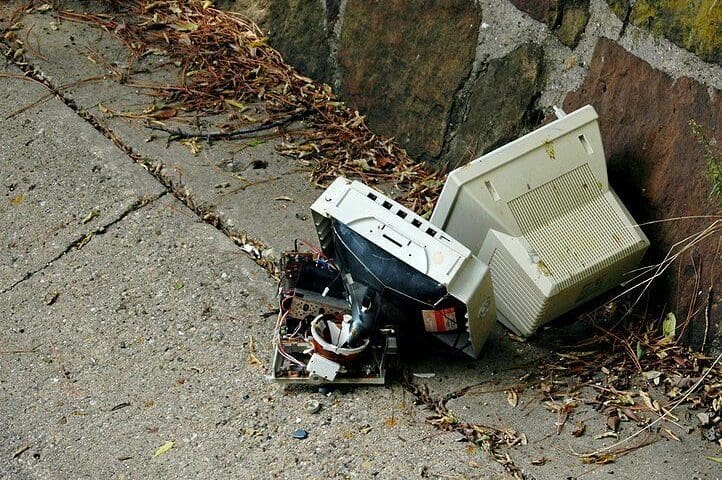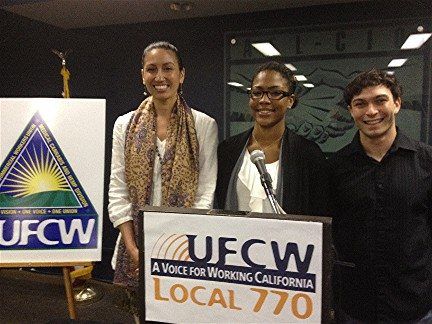

Community members recently wrapped up the three-pronged Long Beach Rising! civic-engagement program aimed at increasing residents’ participation in local politics. I’ve been part of the civic-engagement committee, which formed in November 2011 to address low voter turnout in local elections —particularly from people of color and low-income communities.
From the outset committee members knew we wanted to do something about the persistent disparities in voter participation (and the consequences this has for city policy), but didn’t have a blueprint for this sort of endeavor. So we set out to create one.
From the start there was a high level of enthusiasm, with members from nearly 20 community organizations convening last November to begin planning Long Beach Rising! This process was facilitated by the Long Beach Coalition for Good Jobs and a Healthy Community.
In January, 35 people graduated from our inaugural training program.


L.A. Observed business writer Mark Lacter recently added his voice to the steadily rising chorus of sane commentators calling for an end to the panic jabber about high gas prices. Conservative politicians have been lustily blaming higher pump prices (along with sun spots) on the Obama administration, but Lacter answers them with an inconvenient truth: Prices have actually leveled off and have even crept down a bit lately. And they’re not all that different from last spring’s:
“If you go back to May, 2011,” wrote Lacter, “an average gallon of regular in L.A. was running nearly $4.30 a gallon, and . . . [t]hat’s not even adjusting for inflation.”
Lacter includes a nifty Washington Post video which posits that part of the panic lies in the psychology of drivers having nothing to do when filling up but stare at those numbers spinning upwards on pumps.


Fifty years ago this month Michael Harrington wrote a book, The Other America: Poverty in the United States – a haunting tour of deprivation in an affluent society – that inspired Presidents John Kennedy and Lyndon Johnson to wage a war on poverty. This slim, 186-page volume became a best-seller and became required reading for social scientists, elected officials, college students, members of study groups sponsored by churches and synagogues, reporters and intellectuals, the new wave of community organizers and the student activists who traveled to the South to join the civil rights crusade. Harrington was soon in great demand as a speaker on college campuses, union halls and religious congregations. Reporters and television talk-show hosts wanted to interview him.
Harrington wrote that the poor were invisible to most Americans because they lived in rural isolation or in urban slums. Once they become aware of the situation, Americans should be ashamed to live in a rich society with so many poor people.
» Read more about: Michael Harrington's Other America: 50 Years Later »


Am I allowed to write this? Is it against company rules? Before I tell you why I ask, let me explain a little about myself.
I’m a split personality of sorts. I’m a diligent employee. I’m always punctual in the RH restaurant where I work as a server at the Hyatt Andaz on Sunset in West Hollywood. I can describe every dish in detail. I enjoy getting to know my guests. I smile. I’m warm. I go above and beyond to offer them a great experience. I have many return guests. Some of them even bring me bottles of wine. I’ll refer to this first character as my “A” personality.
My “B” personality exists outside of the confines of Hyatt. Here are a few character identifiers: He’s a passionate union activist for UNITE HERE Local 11. He shows up extra early to the many rallies, strikes and pickets that are held outside of his place of employment.


You won’t read these headlines in your morning paper: “Public Sector Union Leads on Job Creation and Helping the Environment. Government Agency Exceeds Goals.” Not very good copy from the perspective of opinion writers and editors.
You can’t entirely blame the media. It’s human nature. You notice the power outage, not the lights that go on every day. Still, the constant attacks on the public sector (and public sector employees especially) make it important to point out the things that do work.
So bear with me. Last year, the Los Angeles Department of Water and Power was asked by the city to take charge of an $8.5 million American Recovery and Reinvestment Act program to weatherize the homes of low-income customers. The nonprofits that typically do the work didn’t feel they had the capabilities.
Brian D’Arcy, Business Manager of the International Brotherhood of Electrical Workers Local 18 —
» Read more about: Union and Government Partner for Good of City »


Now that we know corporations are people, it may be time to wonder: Is it possible that corporations have feelings?
Does Walmart, Corporate Person, feel bad as communities reject its plans to move in next door?
If so, the world’s largest retailer is bravely hiding its hurt as it marches, head held high, into Los Angeles’ Chinatown. Community opposition erupted a couple of weeks ago as soon as word got out that Walmart planned a store at Chavez and Grand, but Walmart hasn’t flinched publicly. (Queries to Walmart for this post were not answered by publication time.*)
*Update: Steven V. Restivo Sr., Walmart’s Director of Community Affairs, later responded with this message:
“Now that our Walmart Neighborhood Market has received all necessary approvals, we look forward to serving downtown customers soon. We appreciate all the community support to date and will continue to engage with residents and businesses in the area to talk about the jobs,
» Read more about: Walmart: No Friend to Local Business, Studies Show »


Last week I made up my first Twitter hashtag: #wonkygeekheaven. Which is exactly what the first Los Angeles Good Jobs, Green Jobs conference was for me. There was lots of talk about LAANE’s Don’t Waste LA campaign (which my company, Isidore Electronics Recycling, is a new partner of), passionate discussions with labor and environmental groups, analysis of the economic impact of climate change policy on cities and a rally against a big bad waste company.
Like I said, #wonkygeekheaven.
I never thought I would start an electronics recycling company. But while in my twenties I did a stint in (then) City Council President Eric Garcetti’s office, where I focused on public safety and gang intervention and prevention. There, I saw the same truth over and over: At-risk people and those exiting prison need jobs. I headed to graduate school to figure out how to make that happen,
» Read more about: My Quest for a Greener, Cleaner Tomorrow »


Here’s a story you may not be hearing about anytime soon on KPFK — Pacifica, the nonprofit foundation that runs 90.7 FM in L.A., as well as four other progressive radio stations around the country, has retained a high-powered labor-bashing firm. Jackson Lewis LLC, described by the AFL-CIO as “America’s number one union-buster,” is on the Pacifica payroll. “All we do is work,” its site announces – right next to its “Union Free” portal.
Those with long memories of past internecine battles at Pacifica will hardly be surprised to hear about the latest turn of events. This, of course, makes it no less depressing. At a time when right-wing forces are waging war against the rights of American workers to be represented by a union, now is certainly not the time for Pacifica to side with labor’s antagonists.
» Read more about: WebHot! Surprise (Not): Union Busting at Pacifica Radio »


I am an office assistant at the Venice Beach Care Center, a medical cannabis dispensary. I’m also a student at Santa Monica College studying kinesiology. I love my job because it gives me a chance to give back and make a difference — some people who live in pain have chosen an alternative way of healing to manage their sickness, and we are here for them. My job also gives me a chance to interact with people, sharpen my communications skills and develop compassion for patients who need our help.
Every day I wake up and realize I’m a part of something new and historical — and I hope that people’s views of the medical cannabis industry and of employees like myself are changing. Just like other American workers, I dream of a better life for myself — the future I create starts here today, small and local.
Working at the dispensary has made it possible for me to put myself through school and help support my mom.
» Read more about: Blunt Talk: What Marijuana Pharmacy Workers Want »